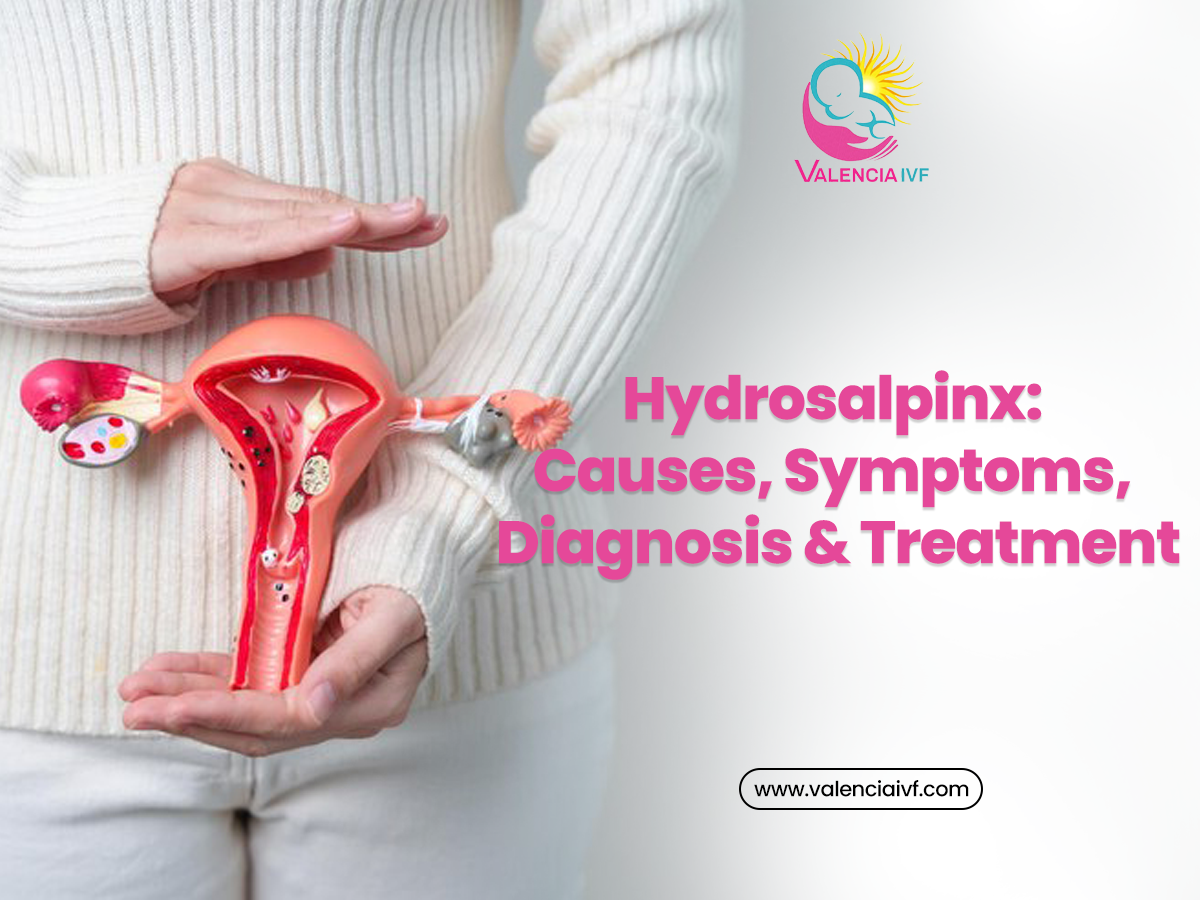
Hydrosalpinx: Causes, Symptoms, Diagnosis & Treatment
Do you know? that almost 30% of infertility cases involve problems related to fallopian tubes and hydrosalpinx is present in 10% to 20% of these cases. A hydrosalpinx is a fluid blockage in your fallopian tubes that may make it difficult for a woman to become pregnant.
When a fallopian tube becomes blocked with fluid due to either illness or injury then it leads to pain and difficulty in conceiving. If you want to explore Hydrosalpinx, we are here to let you know about it. Let’s find out the causes, symptoms, diagnosis, and treatment of hydrosalpinx.
What is Hydrosalpinx?
Hydrosalpinx is a condition in which fluid accumulates in one or both fallopian tubes creating a blockage and swelling. The swelling and blockage at the end of the fallopian tube where it connects to the ovary. It prevents the ovulated egg from entering into fallopian tube where it is normally fertilized by the sperm. Whereas healthy fallopian tubes provide an open passage for an egg and a sperm to fertilize.
A blocked fallopian tube acts as a barrier for sperm to reach the egg. If fertilization does occur then blockage in the fallopian tube prevents the embryo from reaching your uterus. To improve your chances of successful conception, consider the advice of the best infertility doctor in Lucknow. An infertility specialist can guide you and help you with the right treatment.
What are the Symptoms of Hydrosalpinx?
Often there are no symptoms of Hydrosalpinx but some women might face pelvic pain or vaginal discharge that could be sticky or discolored. The pelvic pain may worsen during or immediately after your period.
What are the Causes of Hydrosalpinx?
Hydrosalpinx can be caused due to untreated infection. Harmful bacteria can damage your fallopian tubes and cause inflammation at the part of your fallopian tube near your ovaries or fimbriae. During hydrosalpinx, your fimbriae may fuse and fluid gets trapped inside your tubes which causes swelling. Because of untreated STIs like gonorrhea or Pelvic inflammatory disease, scar tissue, endometriosis or tumors can cause hydrosalpinx.
What are the Diagnosis of Hydrosalpinx?
It is necessary to get a proper diagnosis before undergoing any treatment of hydrosalpinx. Through ultrasound, your fallopian tubes aren’t visible on ultrasound but if fallopian tubes are swollen because of fluid then they will appear larger than usual. Your doctor can suggest more tests if hydrosalpinx is confirmed. Laparoscopy is a way to diagnose hydrosalpinx.
During laparoscopy, a minimally invasive surgery that allows you to see inside the abdominal cavity by making tiny cuts into your belly and inserting a small camera inside it for a closer look at your fallopian tube can help in identifying hydrosalpinx.
A hysterosalpingogram is an X-ray test to determine for blockages in your fallopian tubes. By inserting a dyeing medium in your uterus and watching its movement with the help of an X-ray. If the dye spills out of your tubes then it means fallopian tubes are open but if the dye stops then your fallopian tubes are blocked and you might be facing hydrosalpinx.
What are the Treatments of Hydrosalpinx?
With the help of several treatments, you can get early relief from hydrosalpinx. Depending on the root cause of hydrosalpinx your female infertility specialist can suggest your treatment. Let’s explore what are the treatment options you can undergo for treating hydrosalpinx.
The surgical treatment can help in the removal of affected tubes. This is also known as laparoscopic salpingectomy. During this process, the entire length of the fallopian tube is removed. When a patient undergoes IVF treatment without removing the affected fallopian tube then the live birth rate of their baby is lower as compared to normal patients. By choosing the Best IVF Center in Lucknow, the chances of successful pregnancy increases.
Sclerotherapy is also a treatment option for patients who are suffering from hydrosalpinx. Through this process, the liquid is aspirated from the affected tube. Then sclerosing agent is injected to prevent the tube from refilling with fluid. This is done with the help of vaginal ultrasound. This treatment has a faster recovery time than surgery but it may hold few risks.
After treatment, you can consult with your fertility specialist and undergo the IVF process to conceive a baby. IVF takes around two weeks to complete for each cycle. During IVF, the initial step is ovarian stimulation then retrieval of eggs, and after that collection of sperm and fertilization of egg and sperm under specific conditions in the laboratory. After fertilization, the embryo is transferred to the uterus for implantation.
Conclusion
Untreated hydrosalpinx can become a cause of ectopic pregnancy or increase the risk of miscarriage. If you have been experiencing such challenges during your pregnancy then there are several treatment options are mentioned above.


